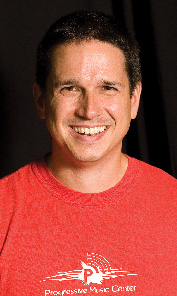 |
  |
 |
SEPTEMBER 2011 I THE RETAIL DOCTOR I BY BILLY CUTHRELL I DOWNLOAD PDF A new strategy for integrating print and digital ads, based on my ‘unscientific’ research If you're like most business owners, you're closely monitoring every penny that goes out the door. Where I used to look at my P&L statements twice a quarter, I now look at them a few times each month and keep vigil on where we can cut back. That said, one area I've always kept in my line of fire is advertising expenditures. I do believe print advertising builds brands and imprints a name and logo in consumers' minds, but I can't justify spending advertising dollars when I have no way of really tracking results. And I recently decided to do a little nonscientific research to back up my assumption that most people find my shops online. My Fairly Unscientific Study At the bottom, I added "Walk-in," "Friend Referral," "Google Ads," "Non-Google Internet Search" and "Found Your Website Through Google." I also included "Have you visited our Facebook or YouTube pages?" I instructed staff to be vigilant in having customers complete this section of the form. After reviewing registrations from the past six months, my research indicated 53 percent of new students said they visited our website after finding us on Google. Eight percent said they found us by clicking on our Google AdWords, and 4 percent said they were walk-ins. Only 4 percent circled "Non-Google Internet Search." A whopping 24 percent said they were referred by a friend, while a mere 4 percent circled nothing and said they couldn't remember how they found us. Three percent wrote something illegible. No one indicated they'd been to our Facebook or YouTube pages, even though several new students had "Liked" us on Facebook. And surprisingly, no one indicated seeing our print ads. My Fairly Unscientific Conclusion With that in mind, I haven't cut our print ads, but I've taken a longer-term view of how we can make print media work in conjunction with online content. (For instance, I add QR codes to print ads that take people to our website and YouTube videos.) And I’ve redirected revenue from print ads I cut into more Google and Facebook ads. Print ads are now teasers. You don't sell the product or service but use the ad to drive traffic to your website, where you close the sale with videos and images of the product. Finally, I think it's safe to say my research provided one solid detail: Our online marketplace is the arena where you develop a two-way relationship with your customer, something harder to do with one-dimensional print ads. MI Billy Cuthrell operates Progressive Music Center and askourmusicians.com. Contact him at billy@ppdsonline.com.
|